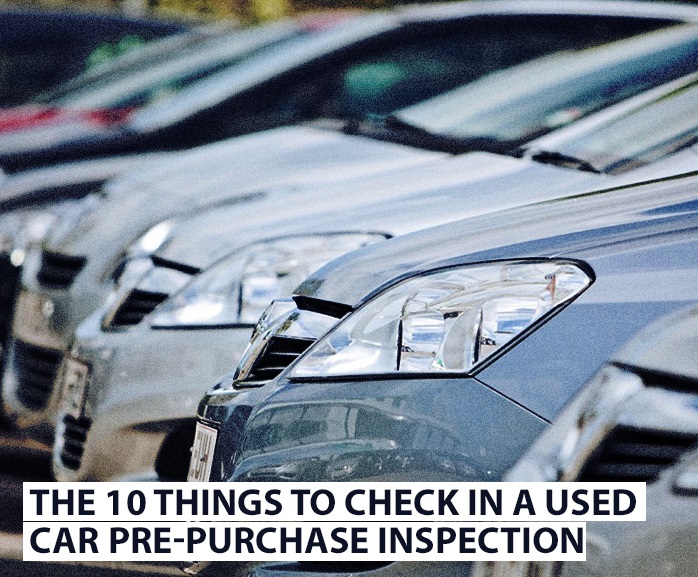Ten Things to Check When Buying a Used Car: What to Look Out For When Purchasing a Second Hand Car
 It has been said that one in three used cars that are sold still have issues or problems with them that can cause untold issues for the unsuspecting purchaser ("New Statistics Confirm Car Buying Dangers", Motor Trade Insider). Whether this be outstanding finance, licence plate changes, or even decreasing speedometers, there are many dangers when purchasing a used or second hand car which can easily be avoided if the purchaser knows what to look for.
It has been said that one in three used cars that are sold still have issues or problems with them that can cause untold issues for the unsuspecting purchaser ("New Statistics Confirm Car Buying Dangers", Motor Trade Insider). Whether this be outstanding finance, licence plate changes, or even decreasing speedometers, there are many dangers when purchasing a used or second hand car which can easily be avoided if the purchaser knows what to look for.
This article details many common faults or problems with used cars so a potential purchaser can identify a fraudulent or problematic vehicle before it is too late, along with what the purchaser can do to avoid future troubles.
Things That You Should Do When Buying a Used Car
- Do Your Homework. When buying a second hand vehicle, do research of the type of car required and any recurring mechanical issues that may arise, and what average running costs are.
- Research Prices. There are various websites available that will give realistic prices for the model of car being sought after, so the purchaser knows what they should be paying.
- Look at Insurance. Check how much car insurance will cost on the model you desire.
- Insist on Documentation. Make sure that you see the car at the owner's home or business premises. Check all documentation, including MOT certificates, and match chassis numbers to the car. Insist on seeing all Service Records.
- Check the Tax Disc. Ensure that the registration number on the tax disc matches the car, and that the tax is in date.
- Take a Friend. Ask a close friend to join you when visiting the car; he or she can provide valuable knowledge and advice and assist in negotiation.
- Visit the Car During the Day. This will show up any dents, scratches or marks clearly.
- Check Wear and Tear. Look at the tyres and pedals for signs of wear and tear, and ensure that the mileage on the clock looks conducive with the state of the car. Thoroughly check the car for rust, damp spots, and so on. A car in poor condition should start ringing alarm bells.
- Get it Independently Inspected. This will provide peace of mind and bring any issues to light.
- Test Drive the Car. The seller should have no problem with this if there is nothing to hide. Whilst on the drive, be sure to test the brakes, assess the clutch, and check the transmission for signs of disrepair.
- Become Insured. The police can impound and scrap the car if the new driver is not insured.
Missing any or all of these points could prove incredibly costly, with replacement car parts priced at anywhere up to and exceeding £1,000. It is therefore imperative that the car, along with all documentation, is thoroughly checked.
How to Buy a Used Race Car: Competition Cars do not Last Forever
 Every used race car is a collection of worn parts; before buying it is essential to check the car over thoroughly with the help of someone with motorsport experience.
Every used race car is a collection of worn parts; before buying it is essential to check the car over thoroughly with the help of someone with motorsport experience.
There are many different cars and classes in which to race them. Before starting the process of buying a car, it is imperative that the would-be owner has: done his/her homes work (research), and prepared a very detailed budget. The budget will not be just for the purchase price of the car (that comes last) but to cover all the associated costs that will have to be met during a seasons racing.
Cheaper to Pay for an Inspection
Having worked out a budget and decided on a car to view, the potential purchaser must decide if he is qualified to examine the car. If not, most race prep shops will inspect a car for a set fee plus expenses. Although the prep shop may recommend not purchasing a certain car, it will still be money well spent. Race cars are not cheap to buy or maintain and choosing the right car and class will make all the difference to how much enjoyment the new owner will get.
For those who feel confident enough to inspect their own car, there are some basic does and don’ts that must be considered before purchasing a car. Having conducted extensive research the potential new owner will know the full history of the car, the total mileage (or hours used), the previous owners (call some to check the car is as advertised), and its entire maintenance record. If any of this information is missing or ambiguous, the car should be treated as suspect.
$35,000 Engine Rebuild
The power train (engine/gearbox/differential) must be inspected carefully. It is not enough to just start the engine and rev. it a few times – a number of race engines cost of $35,000 just to refresh! Checking for oil leaks is obvious, and easy to do, there should not be any. Without disassembling the engine, it is difficult to know what the internal condition is, however, a compression test and leak-down test will at least give an indication of the cylinders and valves.
Most national level competitors have their engines prepared by a specialist race engine shop. These shops will build an engine, run it on a dynamometer and give the owner a reasonable expectation of the mileage the engine will achieve before requiring a rebuild (often referred to as freshening).
The chassis of a race car, irrespective of the class, will have been subject to heavy cornering and braking loads, therefore all the pick-up points and suspension mounts must be inspected.
Safety First
Safety is a major concern when buying a race car. The car will, after all, be used in racing where it will be pushed to the limits. Before buying a car, it must be checked over for any signs of damage. During the inspection the potential new owner must check to see if the car has been in a major accident – twisted chassis, fire damage, welded repairs etc.
The fire retardation systems must be in perfect condition, however, new cylinders and lines are an indication the systems had been replaced (due to a fire around the old one?). The cylinder must be of the appropriate type for the car and fuel it will carry, and must be dated – last inspection, or date of manufacture on it.
Check Chassis Mountings
Race cars with carbon fiber tubs should be inspected by an experienced carbon composite technician. As a rough guide, tapping the chassis (particularly around suspension and engine mounting points) with a blunt metallic object (a metal pen, for instance) will reveal a consistent sound. If any area emits a dull sound, there is a strong possibility that the area has been damaged and is delaminating (the resins and mats are separating inside the chassis).
In conclusion, any part or history of a race car that cannot be verified must be considered to be in need of replacement, that way, a new owner will ensure he has sufficient budget to repair or replace any item he finds not to be serviceable.